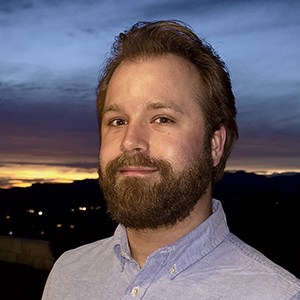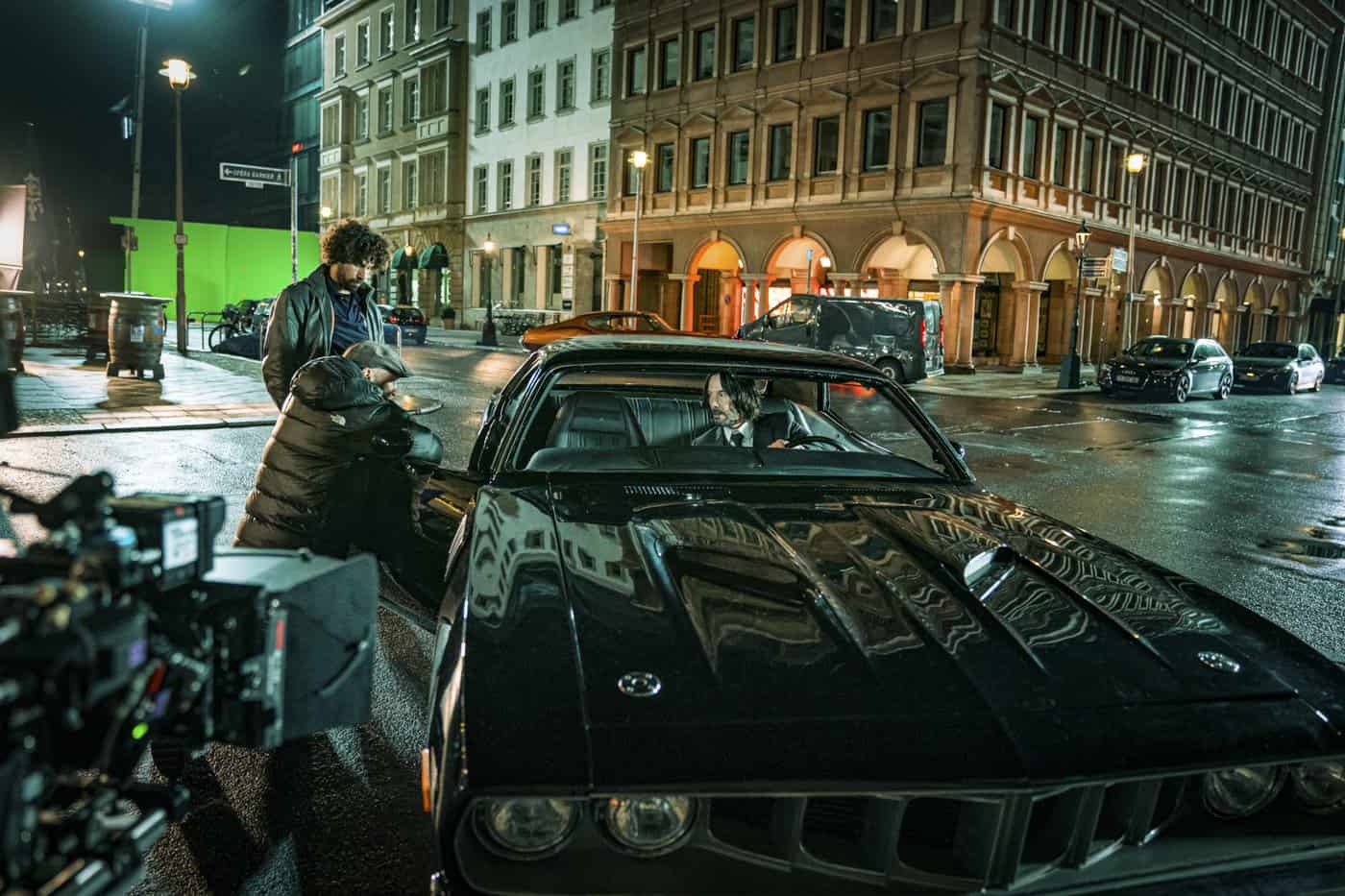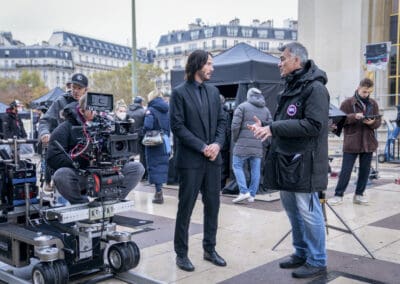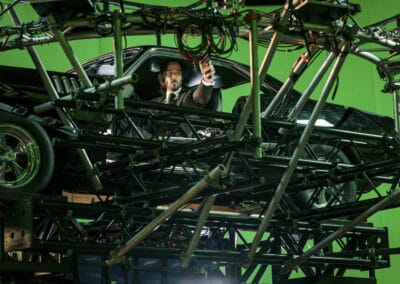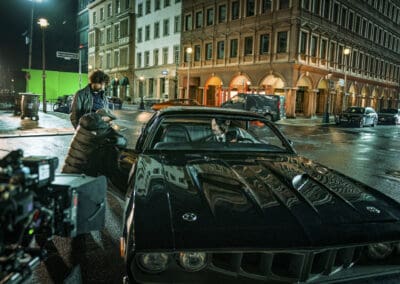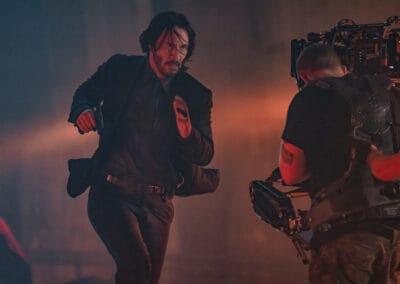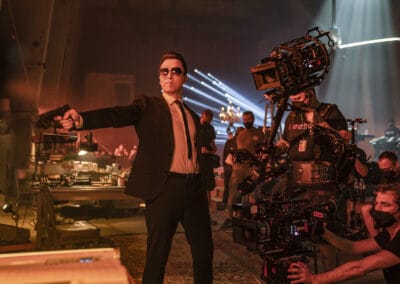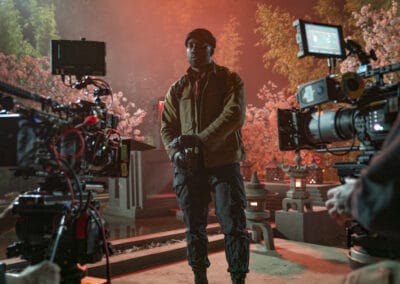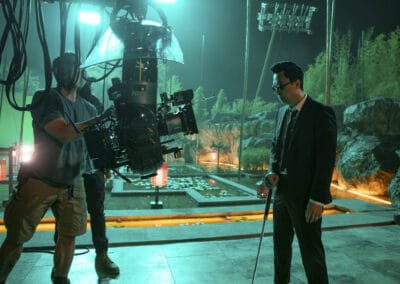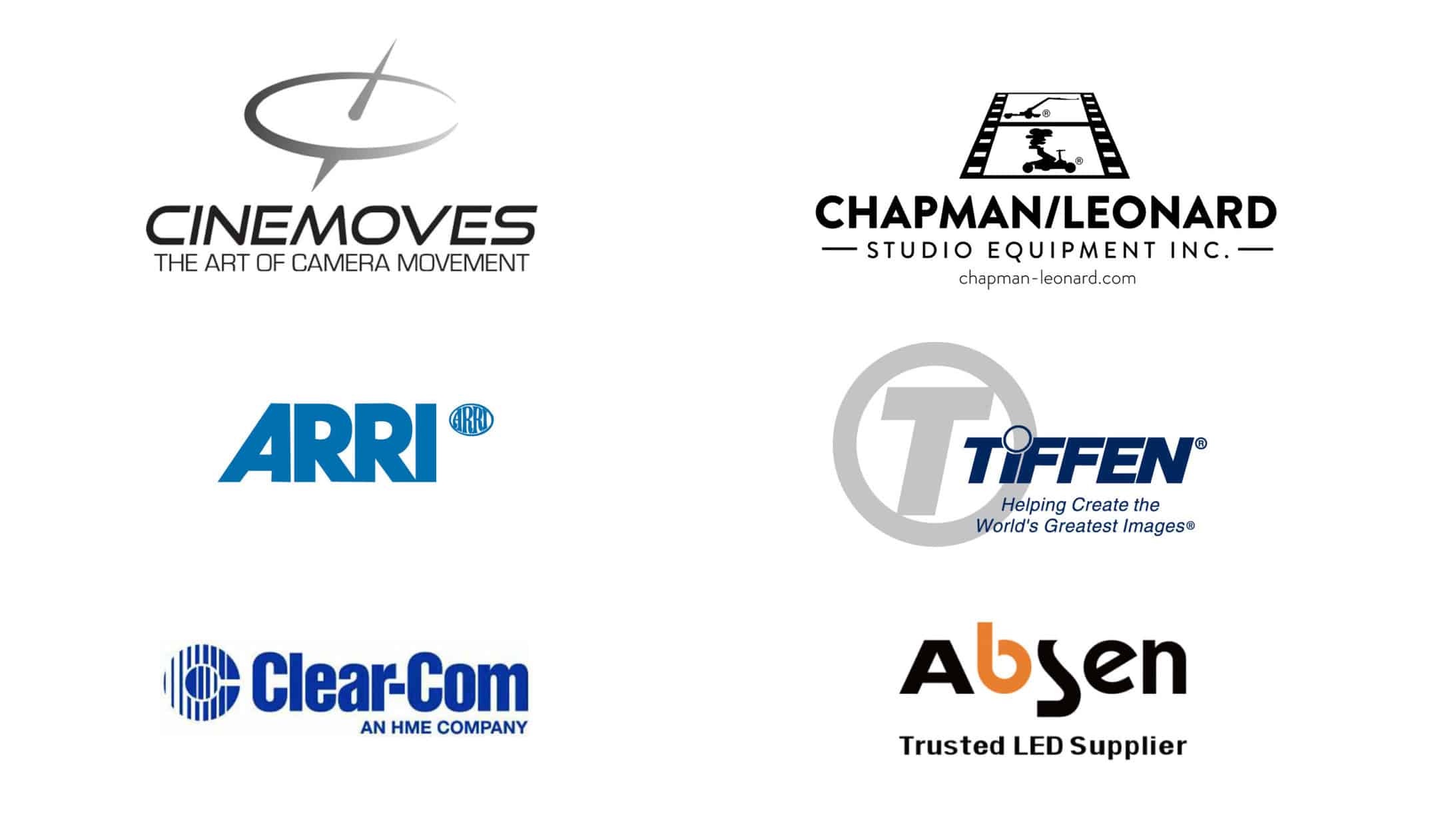John Wick: Chapter 4
Planning and Improvisation
A Conversation with James Frater, SOC
By David Daut
After coming out of retirement to enact revenge on the person who killed his dog and stole his car, being branded “excommunicado” for violating the rules against killing on Continental grounds, and taking his fight to the High Table itself, John Wick desires nothing more than to return to his peaceful life of retirement. But with agents of the High Table hot on his heels, his only way out may be to challenge the Marquis de Gramont for his freedom.
John Wick: Chapter 4 is directed by Chad Stahelski from a screenplay by Shay Hatten and Michael Finch, and stars Keanu Reeves, Donnie Yen, Bill Skarsgård, Laurence Fishburne, Hiroyuki Sanada, Shamier Anderson, Lance Reddick, Rina Sawayama, Scott Adkins, and Ian McShane.
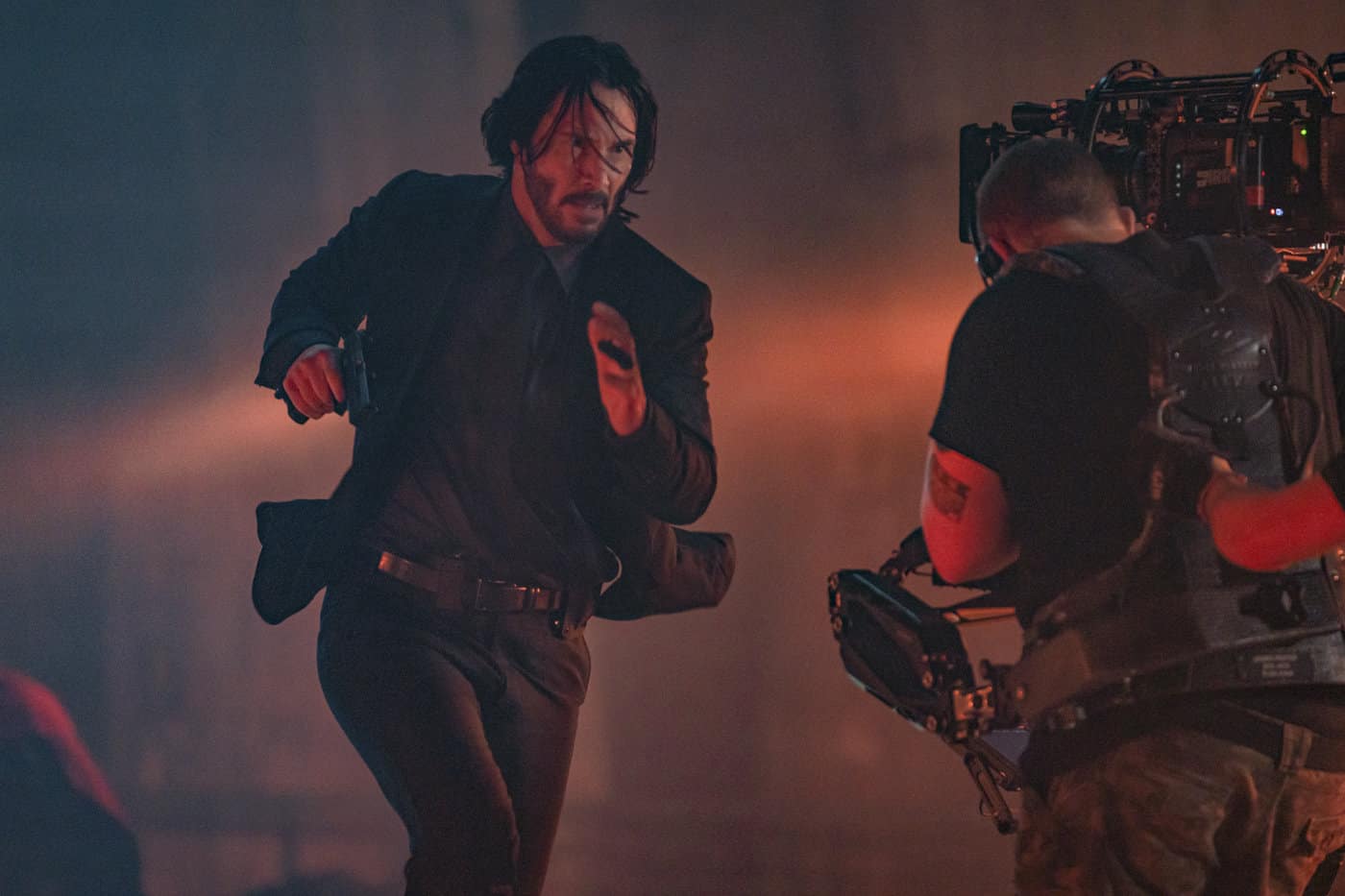
James Frater, SOC, filming Keanu Reeves in John Wick: Chapter 4
When the first John Wick film arrived in theaters in 2014, it ushered in a new style of action movie, one that allowed the action choreography to play out in long, smooth, unbroken shots in contrast with the handheld shake and rapid-fire editing that defined the decade of action movies prior. Over nine years and four films, the scale and scope of the John Wick series has steadily increased, culminating in this year’s John Wick: Chapter 4, a globe-trotting epic that sees the former-former assassin trying one last time to walk away from this life for good.
To learn more about what is involved in shooting the sort of spectacle seen in this film, Camera Operator had the chance to chat with Steadicam operator James Frater, SOC, about his work on John Wick: Chapter 4.
Frater is no stranger to action filmmaking, having worked on series including The Witcher, The Widow, and Six, but this is the first time he’s had the opportunity to shoot on one of the John Wick movies. “The producer, Louise Rosner, was trying to get a friend of mine on the job, but he was unavailable, so he passed my name onto the production. I had a chat with Dan Laustsen, and it turns out that I’m a massive fan of John Wick, it’s absolutely my dream job. I told them what a fan I was—I’m a martial artist myself—and they jumped at the chance of having me there.”
Over four films, the John Wick series has repeatedly garnered praise for the way its action sequences are shot, prioritizing clarity of movement and eschewing unnecessary visual chaos. For a sequence like the siege on the Osaka Continental in John Wick: Chapter 4, it was rare for a shot to be less than five seconds long. “It’s pretty awesome to be able to do long shots and not have to cut them up,” Frater says. “It makes it difficult because all of the actors are actually doing all of these stunts, so there’s a lot more pressure involved and everybody has to be on their top game to get everything right.”
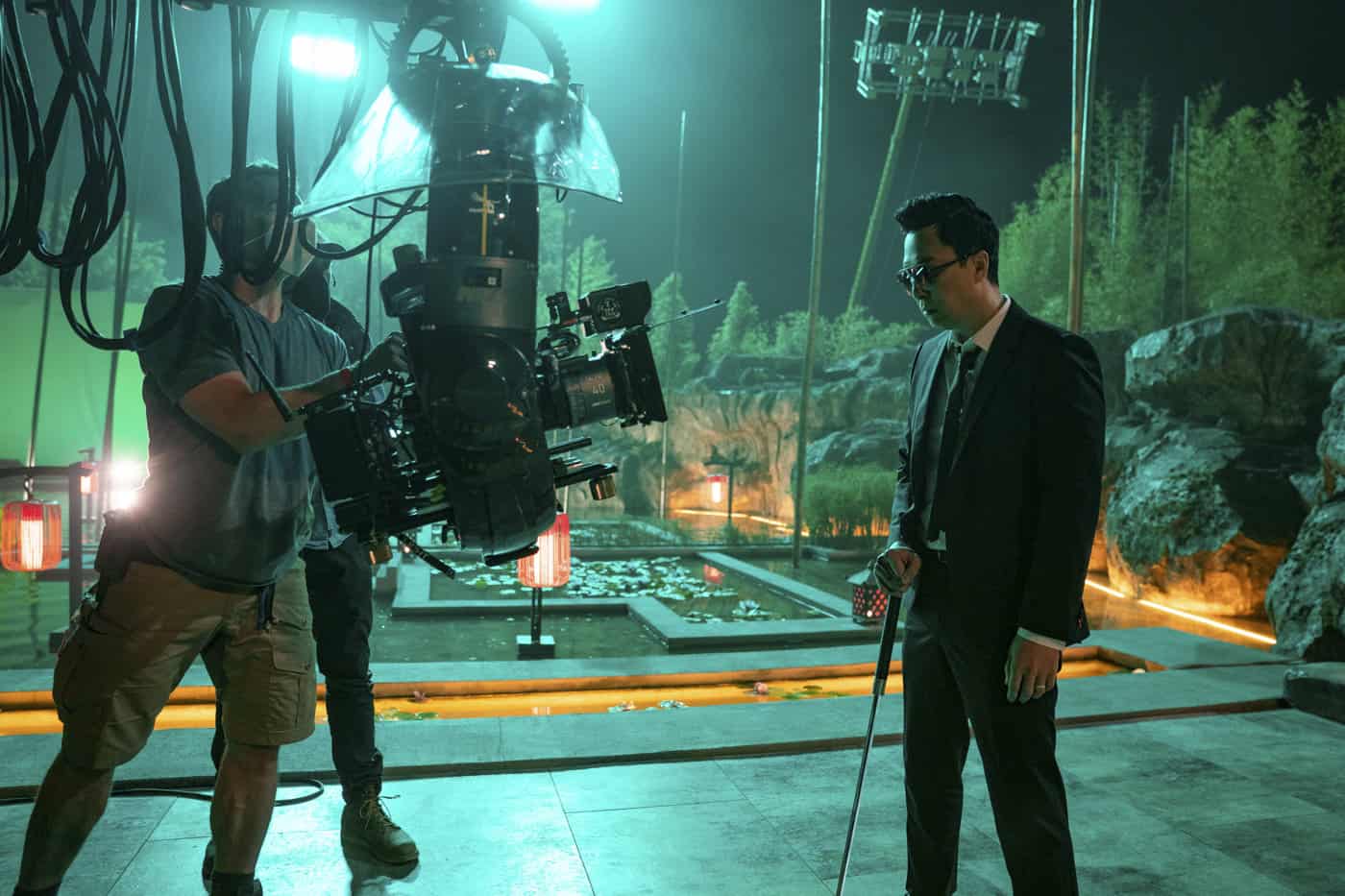
Donnie Yen as Caine in John Wick: Chapter 4
“In terms of the action, Chad’s incredible to watch. He’s an absolute master, and you can see how he breaks the stunts down in such an incredible way.” Director Chad Stahelski made the leap to directing with the first John Wick film after 20 years working as a stunt double and stunt coordinator. Since then, he’s directed the three subsequent John Wick films. “He’s visually incredible. The locations he picks, the style, I mean, he’s reinvented action movies quite single-handedly. The way that he shoots them, it’s mind blowing. I have so much respect for that man, he’s an incredible director. He layers these visual references throughout the film with things like Laurence of Arabia and The Warriors. He puts all of those things in the movie as an homage to cinema. He’s world class.”
With Stahelski’s background in stunts, I asked Frater what it was like working with him on the film’s big action setpieces, and how much planning and rehearsal went into pulling off big moments like the shootout around the Arc de Triomphe and the fight up the steps to Sacré-Cœur.
“Honestly, I just arrive and we shoot. We like to say there’s a lot of rehearsal, but there is and there isn’t. The stunt teams do a lot of rehearsal, so they’ve got everything down to a tee. We arrive on the night, I watch the action once, and then I just put the camera on and I shoot. Pretty much the entire movie is that way. There’s no previz on John Wick; the stunt team works it out and then they show Chad on the night. I watch it all from an angle that I know Chad wants, and then we just shoot.
“There’s a lot of planning involved, but there’s also a lot of shooting from the hip. He’s so good at the action that he just knows exactly what he’s doing all the time. Obviously with the big, dangerous stuff there’s a lot more planning involved, but with a lot of the fight scenes, it’s all improv.”
While the action throughout the movie is spectacular, the real showcase is the escalating series of interlocking setpieces that make up the film’s climax as John Wick fights his way through Paris to his sunrise duel with the Marquis. The first of these is a car chase that culminates in a shootout at the Arc de Triomphe, where John Wick (and, subsequently, the camera) are dodging traffic as well as trading fire with hostile mercenaries. “As soon as [John Wick’s] car is crashed and he’s running around between the cars, the majority of it is Steadicam. I think we had five or six lanes, and each lane had stunt drivers plus a few VFX cars put in later. I would have one of the stunt guys with me at all times, so I would know exactly when I’m safe to go and when I’m not safe to go. We shot that sequence for five nights. The whole shoot was 18 weeks of nights, which was probably the most challenging part of the entire show. But when it came to actually shooting, [the stunt team] are so on top of their game that I never felt like I was in any real danger around the cars. It’s not even a thought of mine to have to worry about any of that stuff. They’ve got everything in place.”
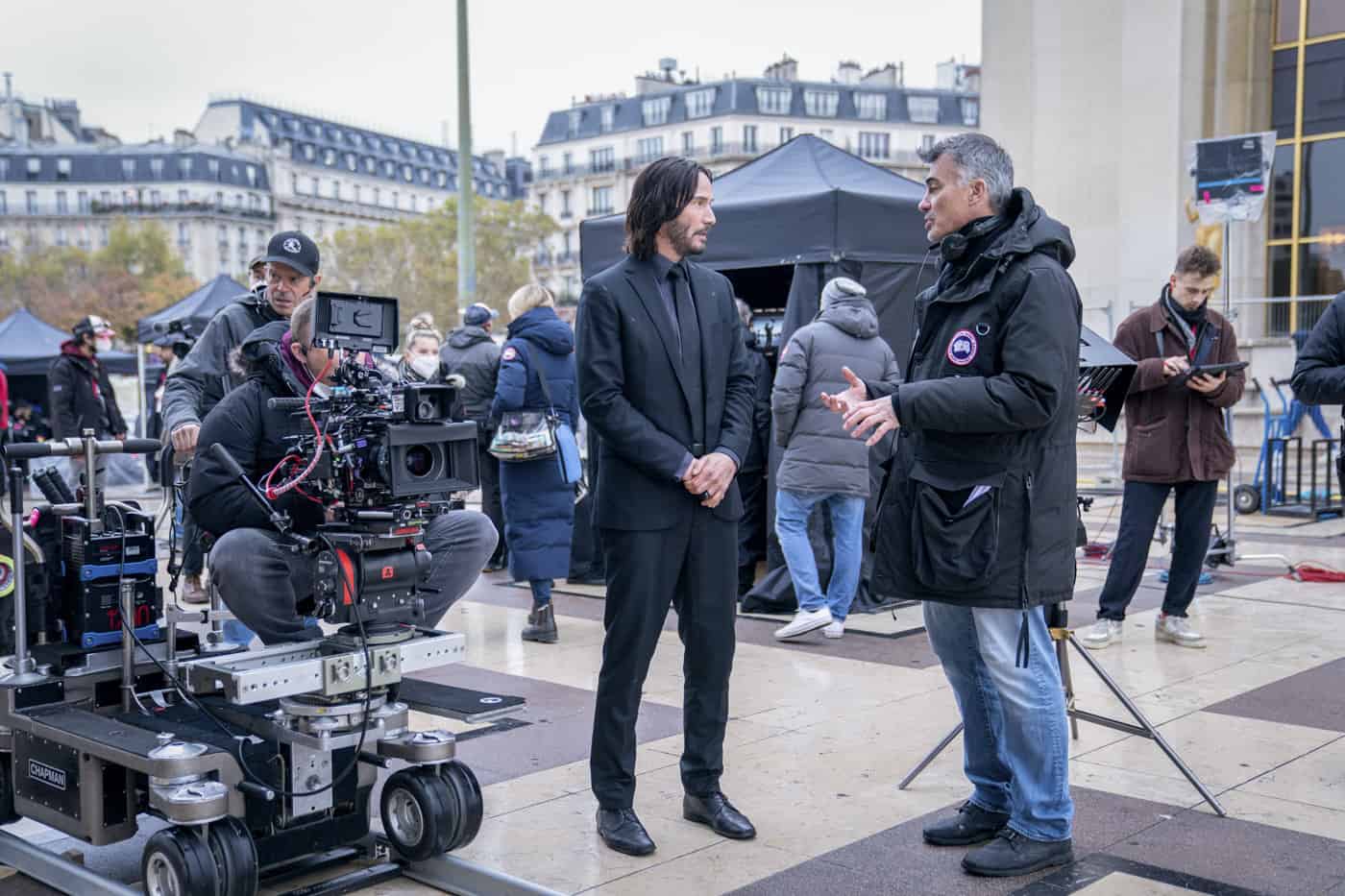
Keanu Reeves and Director/Producer Chad Stahelski
Following the Arc de Triomphe shootout, John is cornered inside a Parisian apartment. He loads up a shotgun with incendiary “Dragon’s Breath” rounds, and as he enters the fray, the camera pulls back from him and flies up into the ceiling, giving a top-down view on the action. “Those were Oliver Cary’s shots. The stunt team had plotted that move and rehearsed it for about 12 straight days before we arrived. That was all a set build, so for Dan to light it was quite a challenge because everything had to be lit from the top-down perspective, which is completely different from what we’re used to. He shot on ALEXA Mini LFs. It was quite a wide lens, so that might have been a Signature Prime. We arrived, everything was plotted in, and then we just went at it. I believe it’s three shots stitched together, and it took us the entire day just to pull off those three shots.”
The final piece of this extended chase sequence follows John Wick up—and eventually down—the 270 steps to the Basilica of Sacré-Cœur. “The staircase fight was quite challenging,” Frater says. “They weren’t 100 percent sure how to shoot it. I think the plan initially was to have a crane on every section of the stairs, but to put a 30 foot Technocrane on each section, we’d first have to take the lighting crane away, bring another crane in, lift the Technocrane onto the stairs, take that crane out, bring the lighting crane back in, shoot, and then repeat it all for the next section. It was ridiculous. So, Chad just asked me if I could get up the stairs with my rig, and I said, ‘yeah, sure.’ I put it on and I ran up there. So, the next couple of nights were just me running up and down the stairs with the rig.”
As John Wick nears the top, however, he is thrown, tumbling all the way back down to the bottom with the camera trailing behind him the whole way. “That’s a 3D Wirecam. Not much planning went into it, we literally decided to do it like that a couple of days before we arrived because the schedule had been pushed so long by the time we got to Paris. We got the same wire team in that did the apartment and they plotted the move before we got there. We arrived, the stuntman threw himself down the stairs and off the camera went. It pretty much played out exactly like that. I think he did it three times. It was quite impressive.”
Finally, I ask Frater about what it’s like working with the film’s central star, Keanu Reeves. “He’s amazing. He’s a true professional. He’s there from the start to the finish. Doesn’t go to his trailer, just sits on his apple box and waits for us to be ready. He puts everything into it. He does it until it’s 100% perfect. It’s really awesome. Very impressive guy, very generous. He makes operating very easy because he understands and appreciates what we do as well.”
A lot has been said about the relationship between the actor and the camera operator, and while that relationship is always essential, it strikes me that for action filmmaking, that is especially true. While the action itself is carried out by the actor and the stunt performers, the camera can either obfuscate that action or showcase it. With the choreography so meticulously rehearsed, there can be freedom for finding the best shot to highlight the spectacle of these scenes. In the case of John Wick: Chapter 4, both the action and the camera work that captures it truly are spectacular.
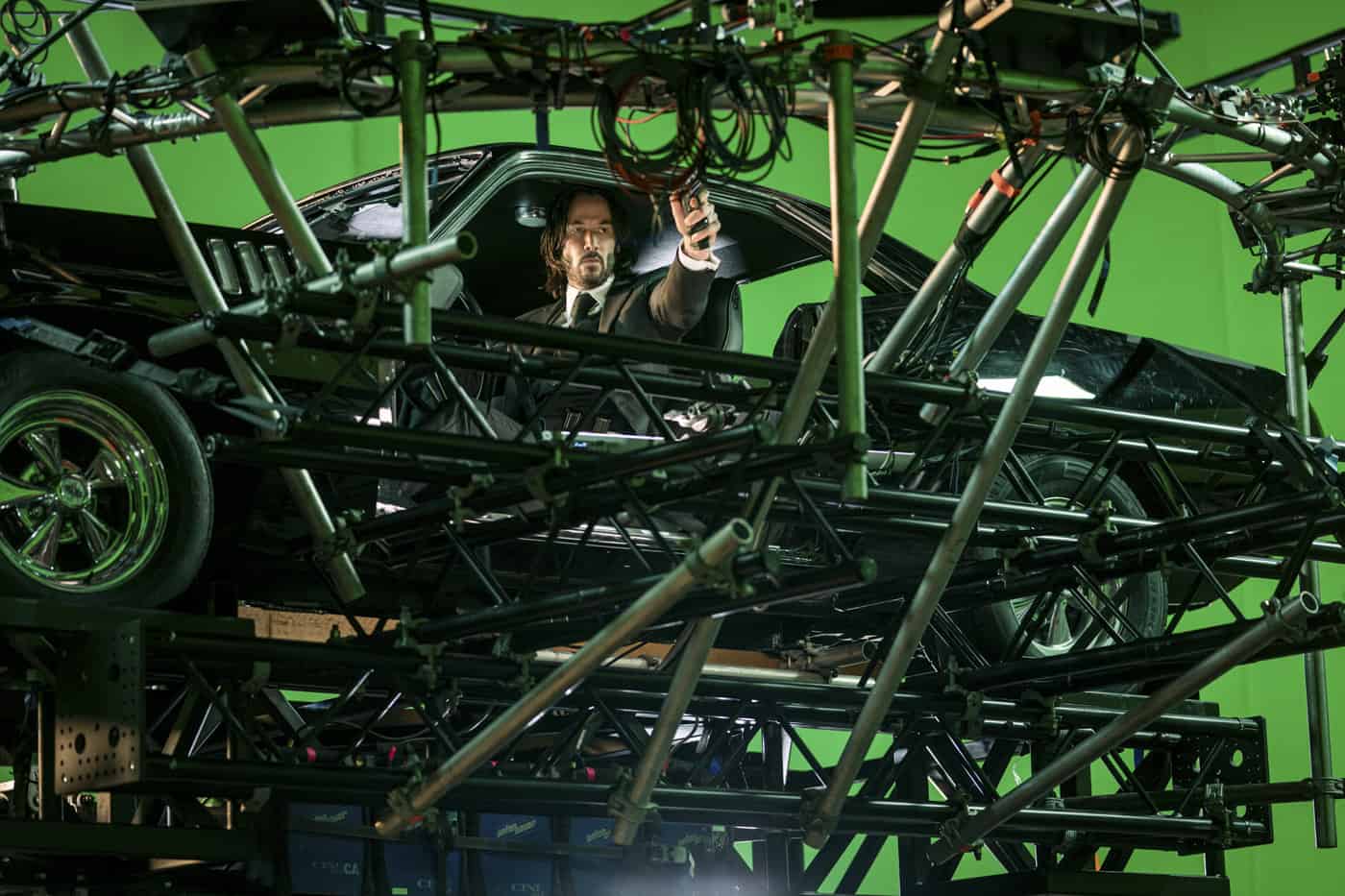
Keanu Reeves as John Wick
Camera Operator Summer 2023
Above Photo: Keanu Reeves as John Wick in JOHN WICK: CHAPTER 4
Photos by Murray Close / Lionsgate
TECH ON SET
ARRI Mini LF
ARRI Alpha Anamorphic Lenses
MK-V AR
50-foot Hydrascope Crane
Wirecam
U-Crane Mobile Crane
BEHIND THE SCENES
Select Photo for Slideshow
James Frater, SOC
James Frater, SOC is a U.K.-based camera and Steadicam operator for film and television with credits including John Wick: Chapter 4; Pinocchio (2022); The Witcher Seasons 1 and 2; Invasion Season 2; and Eye in the Sky.
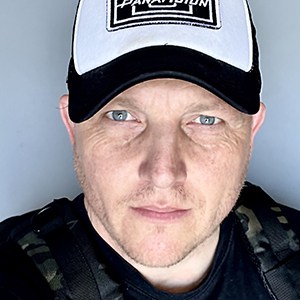
David Daut
A writer and critic for more than a decade, David Daut specializes in analysis of genre cinema and immersive media. In addition to his work for Camera Operator and other publications, David is also the co-creator of Hollow Medium, a “recovered audio” ghost story podcast. David studied at the USC School of Cinematic Arts and works as a freelance writer based out of Orange County, California.
